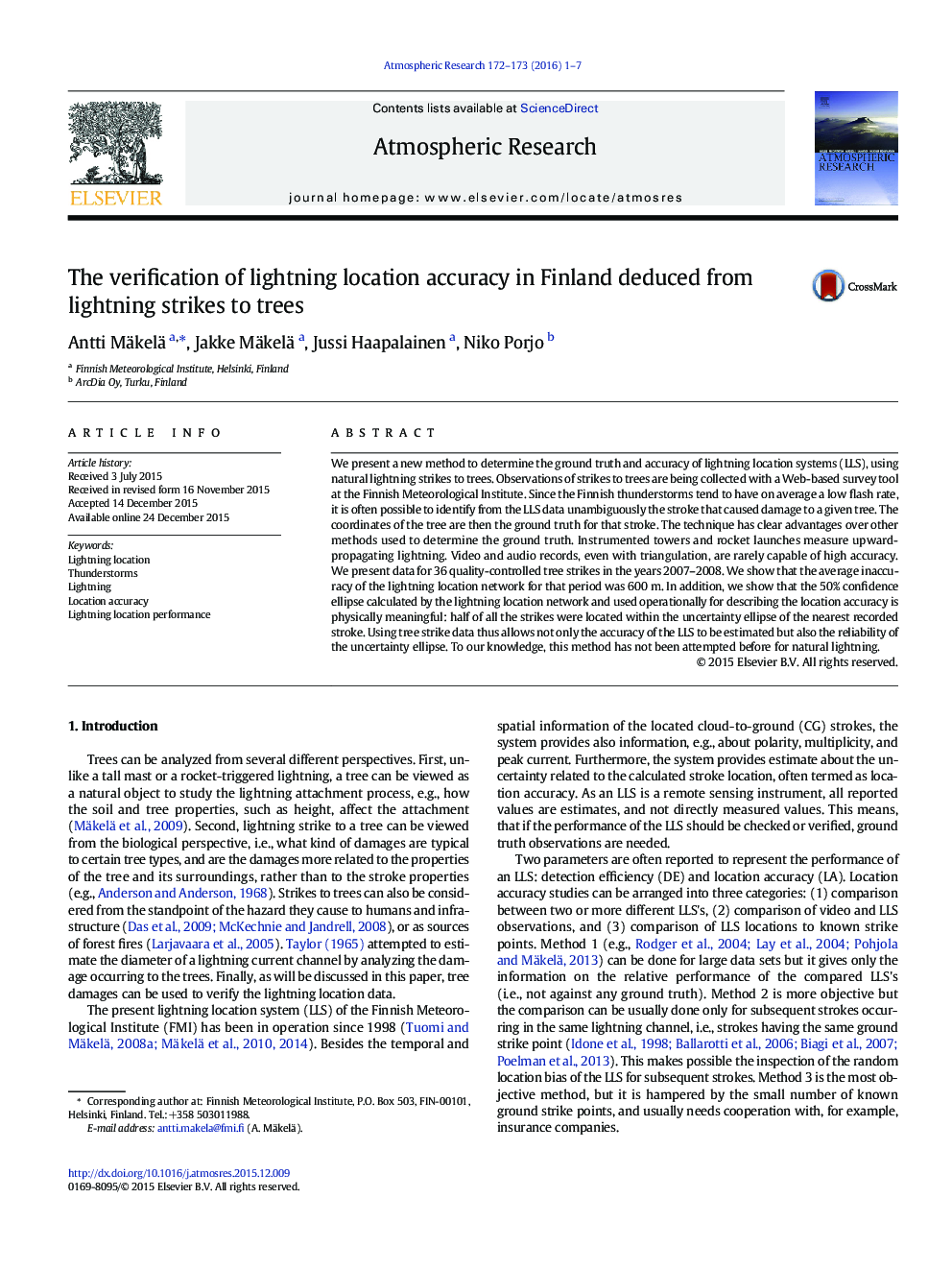| Article ID | Journal | Published Year | Pages | File Type |
|---|---|---|---|---|
| 6343101 | Atmospheric Research | 2016 | 7 Pages |
â¢A data set of lightning hits to trees have been collected.â¢Lightning location accuracy has been verified against tree hits.â¢The location accuracy estimate provided by the location system is valid in Finland.â¢Fifty percent of the tree hits are within the 50% probability confidence ellipse.â¢This is one of the few lightning location verification studies for natural lightning
We present a new method to determine the ground truth and accuracy of lightning location systems (LLS), using natural lightning strikes to trees. Observations of strikes to trees are being collected with a Web-based survey tool at the Finnish Meteorological Institute. Since the Finnish thunderstorms tend to have on average a low flash rate, it is often possible to identify from the LLS data unambiguously the stroke that caused damage to a given tree. The coordinates of the tree are then the ground truth for that stroke. The technique has clear advantages over other methods used to determine the ground truth. Instrumented towers and rocket launches measure upward-propagating lightning. Video and audio records, even with triangulation, are rarely capable of high accuracy. We present data for 36 quality-controlled tree strikes in the years 2007-2008. We show that the average inaccuracy of the lightning location network for that period was 600Â m. In addition, we show that the 50% confidence ellipse calculated by the lightning location network and used operationally for describing the location accuracy is physically meaningful: half of all the strikes were located within the uncertainty ellipse of the nearest recorded stroke. Using tree strike data thus allows not only the accuracy of the LLS to be estimated but also the reliability of the uncertainty ellipse. To our knowledge, this method has not been attempted before for natural lightning.
